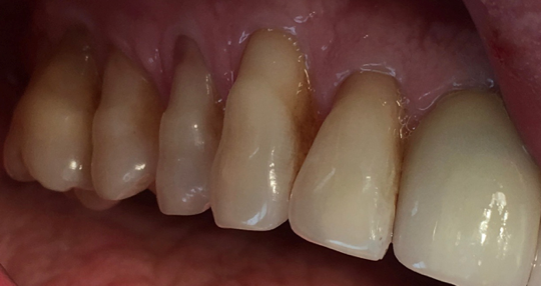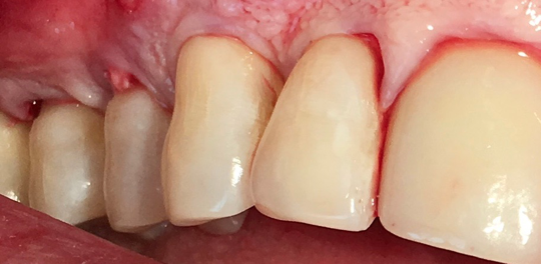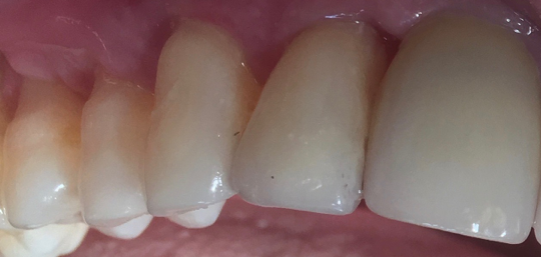When we think about oral health and dentistry, we need to consider the structures surrounding the teeth, namely the bone and gums, as much as the teeth themselves. The American Dental Association estimates that 47% of adults over the age of 30 suffer from progressive periodontal disease. There is mounting evidence pointing to the association between periodontal disease and other systemic, inflammatory conditions including: diabetes, stroke, heart disease, and respiratory illnesses. Genetics, nutrition, oral hygiene, medication, clenching and grinding, and age are all factors that determine one’s propensity for oral inflammation and periodontal disease. Overtime, the gums and supporting jawbone will weaken and deteriorate leading to recession and loss of teeth.
In certain cases of gum recession, a gum graft may be recommended. The purpose of a gum graft is to cover the exposed root in order to strengthen the tooth’s attachment to its foundation, protect it from decay, reduce sensitivity, and also improve esthetics.
Traditionally, a periodontist would cut a patch of tissue from the roof of the mouth, create a pouch in the area of recession, and sew it over the surface of the exposed root. The greatest deterrent for many patients is the post-op pain and swelling associated with harvesting the gum from the palate. The Chao Surgical Pinhole Technique is a new, less invasive method that eliminates the need to cut and harvest tissue or create large incisions. The tissue around the receded gum is numbed, and a pinhole is made above or below the teeth being grafted. A special tool is inserted through the tiny hole and moves the gum over the exposed root. Collagen is placed through the pinhole to stabilize the new position of the gum until the body regenerates its own tissue to reattach to the root surface. The Chao Surgical Pinhole Technique was published in the International Journal of Periodontics and Restorative Dentistry, and featured in numerous peer reviewed articles and journals. Based on the studies, the success rate is comparable to the traditional method, but with a faster and less painful recovery (ChaoBrochure). Dr. Mustian is certified in pinhole grafting procedure.

Pre-op.

Immediately following procedure – no sutures, incisions, swelling.

6 mos post-op.
